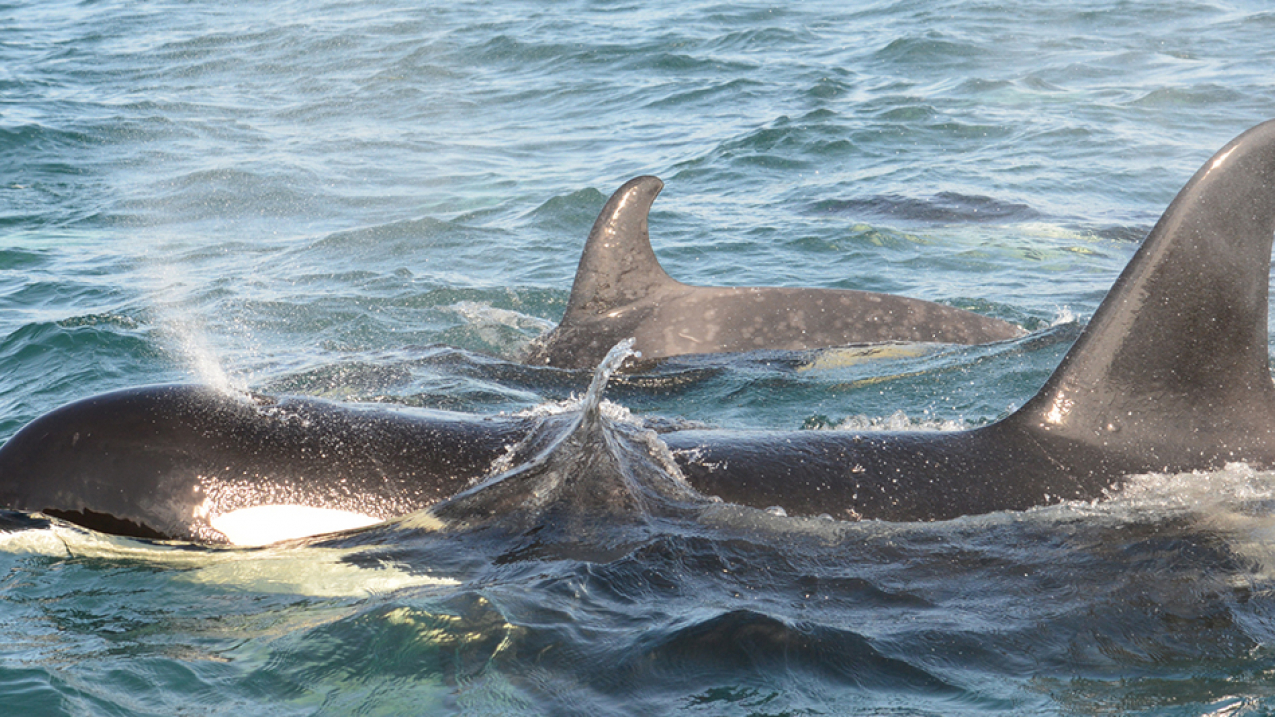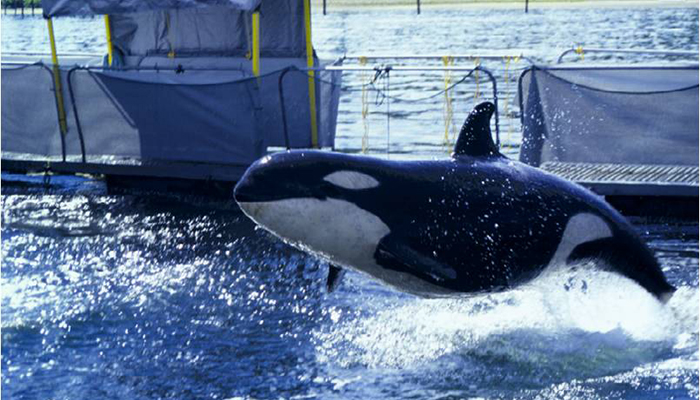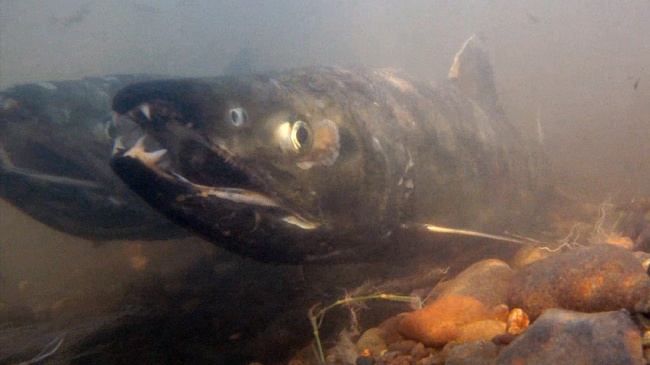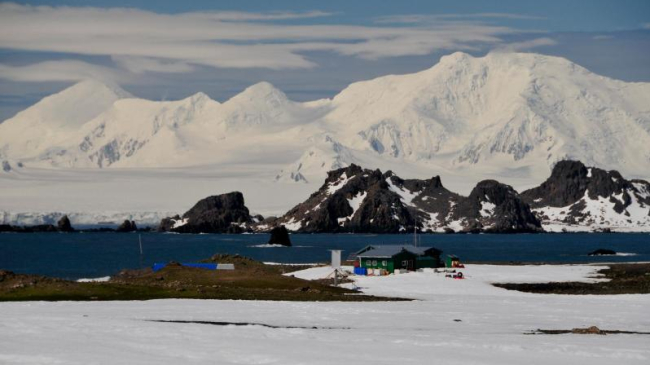The third and final installment of our Saving Springer series
Fifteen years ago this summer, the Northwest joined forces to orchestrate the unprecedented rescue of a wild killer whale calf. The effort built trust, partnerships, and goodwill that continue to contribute to killer whale recovery today. We tell the story of Springer in three parts. And now, our final installment, Part Three.

Fittingly, in the spring of 2017, Springer gave birth to the second of two calves she has contributed to the population of Northern Resident killer whales. (Image credit: Lisa Spaven/Canada Department of Fisheries and Oceans.)
In June 2002, NOAA Fisheries assembled a capture team of specialists that included whale biologists and veterinarians. The mission was on.
It took days of preparation to finally capture Springer. The team spent time with the animal to get her accustomed to the sites and sounds of the boat and gear that would lure her into a sling. Once captured, she was carefully placed on a landing craft donated by a local salmon farm to transport her to a holding pen at NOAA Fisheries' Manchester Research Station. Once at the station, biologists and veterinarians could thoroughly assess her health.
Everyone tried to minimize human contact with Springer, so she would not become too familiar with or dependent on people.
“We needed to understand her condition and health, but we had to do it in a way that did not compromise her return to the wild,” said biologist Lynne Barre, who helped monitor Springer in the net pen and later became the recovery coordinator for killer whales in NOAA Fisheries’ Seattle office. “Getting medical tests showing she wasn’t a disease risk to other whales in Canada was a huge relief.”
An ‘orphaned orca fund’
Supportive organizations formed an orphaned orca fund to help obtain supplies and pay expenses surrounding Springer’s rescue and monitoring. Barre and Brent Norberg, NOAA’s Northwest stranding coordinator, helped handle requests for equipment, including a large boat that could transport Springer from the pen near Seattle to British Columbia.
“Many, many people and organizations got involved at different levels, and we could not have managed this without them,” Norberg recalled.
A local salmon farm (then Cypress Island, Inc., now Cooke Aquaculture) provided live salmon. Biologists fed them to Springer by sliding them through a pipe, so the young whale would not be hand fed. That could jeopardize her ability to capture live prey on her own.
“Springer changed the landscape completely,” said Donna Sandstrom, a longtime whale advocate. “She brought together these groups and agencies that often did not know each other. It was in that pressure cooker that we learned how to work together.”
Bob Lohn, regional administrator of NOAA Fisheries at the time, remembers riding with Springer to British Columbia aboard a fast catamaran that had been provided free of charge by Nichols Brothers Boat Builders. He said the whale watched everyone very closely -- and he couldn’t help but wonder what was going through Springer’s mind.
The credit goes to Springer
The release plan had called for holding Springer in a net pen near the north end of Vancouver Island for a few weeks while she became acclimated to the new location and, hopefully, made contact with her family of whales nearby.

Luckily, that happened sooner than anyone had imagined: Other Northern Resident killer whales swam by the mouth of the cove where the pen was located the very night that Springer arrived.
The wild whales vocalized, and Springer spoke back. Based on that rapid interaction, biologists decided to release Springer the next day.
Springer’s reunion with her family was an unprecedented success. In 2013, she contributed to the threatened Northern Resident population by giving birth to a calf. This year she gave birth to another.
“That final step – whether she would reunite with the other whales – well, you just have to give total credit to the animals,” said Joe Scordino, then deputy regional administrator for NOAA Fisheries in the Northwest,. “Springer knew exactly what to do, and it all worked. We all were surprised at how fast it happened."
This article is the third and final installment of our Saving Springer series. Part One and Part Two were published earlier this week.
More: Watch the Emmy Award-winning PBS documentary about Springer’s 2002 rescue



